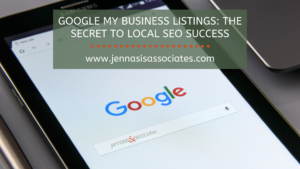You’ve probably heard about ChatGPT, the latest artificial intelligence (AI) powered chatbot that’s taking the internet by storm. With the ability to produce college-level essays and complex code in seconds, the world of content is changing dramatically.
Now you don’t need to hire someone to write for you–ChatGPT will do it for you, in a fraction of the time, for free. What could be better?
Well, a few things. The bot has some significant drawbacks. According to Forbes, “[it has] a tendency to produce incorrect answers, constantly using the same phrases.”
Additionally, AI language models cannot draw from the internet or an external source for information. Instead, they rely on the information they’ve been “taught.”
ChatGPT finished “learning” in 2021, which means it has no idea that President Biden fell off a bike, Queen Elizabeth died, Russia invaded Ukraine, Elon Musk bought Twitter, or Will Smith slapped Chris Rock at the Oscars.
And while it can imitate tone (check out this Shakespearean sonnet it wrote), it can be tough to describe your brand’s style for a bot to replicate.
A bigger issue: since ChatGPT is trained on already-published works, it’s possible that Shakespeare-inspired sonnet has some copyrighted material in there. At best, publishing an AI-generated piece is a slippery slope, without legal precedent.
Plus, without historical context, nuance, and a human moral compass, AI chatbots can produce content that might be biased or downright offensive. Our language is constantly changing, and these bots aren’t built to keep up. Although filters are put in place to keep the most egregious terms out of use, something might slip through the cracks.
Samyutha Reddy, Head of Enterprise Marketing at Jasper.ai, another AI-powered content generator, is still building her team of marketers and writers even though they utilize generative AI daily.
“AI augments the human experience, but it doesn’t replace the human within that experience,” she noted. “We value writers in our society because they’re able to give us a thought-provoking human perspective on the world. It isn’t just about summarizing facts that are out there. It’s about humans sharing opinions on very real topics that help build your perspective on how you feel about something. So an AI could really never replace that human perspective.”
Bottom line: While tools like ChatGPT have their place, keep them in your back pocket to help you rather than substitute you. Honing your writing skills to speak to your audience is reliable–and, most importantly–as authentic as it gets.
So, here are four tips to make your writing cleaner and stress-free, so you don’t always have to rely on a bot.
Befriend Your Audience
We know. It’s been repeated a million times, but it never stops being true. Finding topics or mediums to entertain your audience isn’t a struggle when they’re your best friend.
For example, imagine you run a fitness club. Your audience is primarily young individuals who love feeling and looking their best. Your fitness club has a reputation for being a place with an incredible array of workout equipment, but you tend to get a lot of weightlifters in your club.
So, a snapshot of your content calendar might look like this:
- The most popular protein shakes for building muscle
- Injury prevention/best practices
- Weightlifting jokes/memes
- New workout gear you’re loving
- Favorite recovery tips
- Getting back into things after you’ve taken a break
- New equipment in the club
- Common mistakes that make workouts less effective
- Workouts specialized for teens, athletes, pregnant or postpartum women, etc.
Each topic has a few subtopics that can easily carry your content forward and be recycled. The content is precisely what your audience is looking for, which means you’re creating value.
Plus, lots of these are great conversation starters. Generating discussion among your audience makes your content shareable and helps you grab attention and stand out.
Speaking of standing out: one of the best ways to create highly shareable, sticky content is to venture out of your safe zone. Share a slightly controversial opinion or weave in current events as a starting point (example: ChatGPT).
You don’t need to get too crazy with it–you could share your opinion on the cake-to-frosting ratio in cupcakes, for example. The goal is to make your content different than everyone else’s, which will help you create a presence on the web.
Set Goals, Make Plans
Are you trying to sell more products? Get more eyes on your website? Keep clients coming back for more?
Craft content with your goal in mind–and measure your success with key performance indicators (KPIs). That might mean monitoring the organic traffic on your website or keeping track of the popularity of your blog posts.
Using goals and KPIs keeps your content focused, organized, and targeted. You’ll know what works and what doesn’t, allowing you to pivot when the results aren’t satisfactory. This method will save you a chunk of time in the long run.
Plus, once you have a good feel for what works, you can create a formula for yourself to keep the momentum going. Repeat what works, and toss what doesn’t.
Once you’re in your groove, create a calendar for content creation. Set aside time to think of topics your audience would be interested in and write content well in advance, taking time to edit carefully. (Feel free to steal from our list above, gym owners.)
Rushing to create content on the fly, on the other hand, will make your content look and feel incomplete and sloppy. Give yourself the gift of time–put your best foot forward and plan ahead!
Write Good. (Yes, pun intended.)
We know what you’re thinking: easier said than done. Maybe putting pen to paper isn’t your strong suit, but that doesn’t mean you can’t produce quality content.
Content can come in many forms: videos, infographics, podcasts, social media posts, paid ads, and more.
While writing is a huge part of content development (posts need captions, etc.), if it isn’t your forte, try to focus on another content format that will suit your audience and your talents.
If you find that you can’t avoid writing, try these tips:
- Write like you talk. Don’t focus on impressive vocabulary or complex sentence structure. The internet is a casual place, and your audience are your friends. Write as if you’re discussing with them.
- Read more. Aside from the brain benefits, reading can help you better understand the rhythm of written language. Plus, reading within your industry–books, magazines, or even blog posts–enables you to get a better feel for what your audience is interested in hearing (and what your competition is saying).
- Simplify things. Try to make your sentences as clear to the average reader as possible. There are exceptions to this rule, but try to simplify sentences, shorten paragraphs, and avoid terms–like industry jargon–that a general audience would not understand.
- Practice. Writing is a skill like riding a bike or playing an instrument. Practicing is a powerful way to improve your writing. Grab a notebook and write about your day to start.
- Don’t worry about it. Even bots make writing mistakes. Although you should avoid spelling mistakes, don’t worry if your writing falls short of your expectations. You’re not in school anymore, so no one’s grading your work.
And, if you need extra assistance…
Ask for Help
The best content is clean and error-free, but it can take time to catch mistakes in your writing.
There are several methods to avoid careless mistakes that compromise your credibility. Reading your content as if you were a robot (ahem. AI-powered chatbot) or having a friend read through your work before publishing can be very helpful.
You can also use AI tools such as Grammarly and Hemingway to correct mistakes. These tools fix more than typos–they can also catch grammatical mistakes, punctuation errors, and help you clarify complex sentences.
Plus, Grammarly and Hemingway are free to use. Even better–Grammarly plugs into your browser to catch mistakes wherever you find yourself on the internet.
Another option available to you is Jennasis & Associates. Content development is one of our specialties, from writing and editing to graphic design and video production. Want to take the next step? Contact us here!






